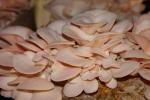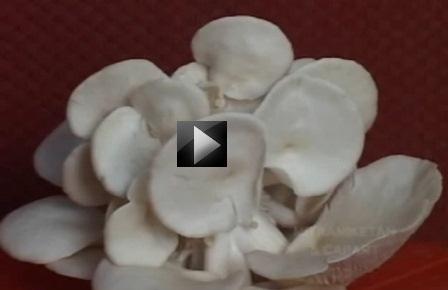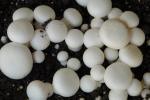Floriculture or flower farming is the study of growing and marketing flowers and foliage plants. Floriculture includes cultivation of flowering and ornamental plants for direct sale or for use as raw materials in cosmetic and perfume industry and in the pharmaceutical sector. It also includes production of planting materials through seeds, cuttings, budding and grafting. In simpler terms floriculture can be defined as the art and knowledge of growing flowers to perfection. The persons associated with this field are called floriculturists.
Worldwide more than 140 countries are involved in commercial Floriculture. The leading flower producing country in the world is Netherlands and Germany is the biggest importer of flowers. Countries involved in the import of flowers are Netherlands, Germany, France, Italy and Japan while those involved in export are Colombia, Israel, Spain and Kenya. USA and Japan continue to be the highest consumers.
Floriculture in India
Floriculture is an age old farming activity in India having immense potential for generating gainful self-employment among small and marginal farmers. In the recent years it has emerged as a profitable agri-business in India and worldwide as improved standards of living and growing consciousness among the citizens across the globe to live in environment friendly atmosphere has led to an increase in the demand of floriculture products in the developed as well as in the developing countries worldwide. The production and trade of floriculture has increased consistently over the last 10 years. In India, Floriculture industry comprises flower trade, production of nursery plants and potted plants, seed and bulb production, micro propagation and extraction of essential oils. Though the annual domestic demand for the flowers is growing at a rate of over 25% and international demand at around Rs 90,000 crore India’s share in international market of flowers is negligible. However, India is having a better scope in the future as there is a shift in trend towards tropical flowers and this can be gainfully exploited by country like India with high amount of diversity in indigenous flora.
After liberalization the Government of India identified floriculture as a sunrise industry and accorded it 100 percent export oriented status. The liberalization of industrial and trade policies paved the way for the development of export oriented production of cut flowers. The new seed policy has already made it feasible to import planting material of international varieties. Floriculture products mainly consist of cut flowers, pot plants, cut foliage, seeds bulbs, tubers, rooted cuttings and dried flowers or leaves. The important floricultural crops in the international cut flower trade are rose, carnation, chrysanthemum, gerbera, gladiolus, orchids, anthurium, tulip and lilies.
According to statistics indicated in the Handbook on Horticulture Statistics 2014, the total area under flower crops in 2012-13 was 232.70 thousand hectares. Total area under floriculture in India is second largest in the world and only next to China. Production of flowers was estimated to be 1729.2 MT of loose flowers and 76731.9 million (numbers) of cut flowers in 2012-13. Fresh and Dried cut flowers dominate floriculture exports from India.
Among states, Karnataka is the leader in floriculture with about 29,700 hectares under floriculture cultivation. Other major flower growing states are Tamil Nadu and Andhra Pradesh in the South, West Bengal in the East, Maharashtra in the West and Rajasthan, Delhi and Haryana in the North.
The expert committee set up by Govt. of India for promotion of export oriented floriculture units has identified Bangalore, Pune, New Delhi and Hyderabad as the major areas suitable for such activity especially for cut flowers. Of the four zones identified as potential centers for flower production namely Bangalore, Hyderabad, Pune and New Delhi, the area around Bangalore and Pune have got the advantage of ideal climatic conditions where the temperature ranges between 15 to 30ºC. In view of this, the units established in these locations do not require either cooling or heating system. As a result maximum number of units has been established in these locations. There are more than 300 export oriented units in India. APEDA (Agricultural and Processed Food Products Export Development Authority) is the registering authority for such units.
Marketing
In India Marketing of cut flowers is much unorganized. In most of the Indian cities flowers are brought to wholesale markets, which mostly operate in open yards. From here the flowers are distributed to the local retail outlets which more often than not operate in the open on-road sides, with different flowers arranged in large buckets. In the metropolitan cities, however, there are some good florist show rooms, where flowers are kept under controlled temperature conditions, with considerable attention to value added service.The government is now investing in setting up of auction platforms, as well as organized florist shops with better storage facilities to prolong shelf life. The packaging and transportation of flowers from the farms to the retail markets at present is very unscientific. The flowers, depending on the kind, are packed in gunny bags, bamboo baskets, simple cartons or just wrapped in old newspapers and transported to markets by road, rail or by air. However, the government has provided some assistance for buying refrigerated cargos and built up a large number of export oriented units with excellent facilities of pre-cooling chambers, cold stores and reefer vans.
According to a study titled, ‘Indian Floriculture Industry: The Way Ahead’ released by the apex industry body ASSOCHAM, India’s floriculture industry is growing at a compounded annual growth rate of about 30%, and is likely to cross Rs 8,000 crore mark by 2015. Currently, the floriculture industry in India is poised at about Rs 3,700 crore with a share of a meagre 0.61% in the global floriculture industry which is likely to reach 0.89% by 2015.
Export Constraints
In spite of an abundant and varied production base, India’s export of floricultural product is not encouraging. The low performance is attributed to many constraints like non-availability of air space in major airlines. The Indian floriculture industry is facing with a number of challenges mainly related to trade environment, infrastructure and marketing issues such as high import tariff, low availability of perishable carriers, higher freight rates and inadequate refrigerated and transport facilities. At the production level the industry is faced with challenges mostly related to availability of basic inputs including quality seeds and planting materials, efficient irrigation system and skilled manpower. In order to overcome these problems, steps must be taken to reduce import duty on planting material and equipment, reduce airfreight to a reasonable level, provide sufficient cargo space in major airlines and to establish model nurseries for supplying genuine planting material. Training centres should be established for training the personnel in floriculture and allied areas. Exporters should plan and monitor effective quality control measures right from production to post harvesting,storage, and transportation.
Government Programmes and Policies
Department of Agriculture and Cooperation under the Ministry of Agriculture is the nodal organization responsible for development of the floriculture sector. It is responsible for formulation and implementation of national policies and programmes aimed at achieving rapid agricultural growth through optimum utilization of land, water, soil and plant resources of the country. Production of cut flowers for exports is also a thrust area for support. The Agricultural and Processed Food Products Export Development Authority (APEDA), the nodal organization for promotion of agri exports including flowers, has introduced several schemes for promoting floriculture exports from the country. These relate to development of infrastructure, packaging, market development, subsidy on airfreight for export of cut flowers and tissue-cultured plants, database up-gradation etc. The 100% Export Oriented Units are also given benefits like duty free imports of capital goods. Import duties have also been reduced on cut flowers, flower seeds, tissue-cultured plants, etc. Setting up of walk in type cold storage has been allowed at the International airports for storage of export produce.
Initiatives have also been launched for the benefit of exporters by providing cold storage and cargo handling facility for perishable products at various international airports. Direct subsidy up to 50 percent is also available in cold storage units. Besides, subsidy is also provided by APEDA on improved packaging materials to promote their use. To attract entrepreneurship in floriculture sector, NABARD is providing financial assistance to hi-tech units at reasonable interest rates.
Several schemes have been initiated by the Government for promotion and development of the floriculture sector including “Integrated Development of Commercial Floriculture” which aims at improvement in production and productivity of traditional as well as cut flowers through availability of quality planting material, production of off season and quality flowers through protected cultivation, improvement in post harvest handling of flowers and training persons for a scientific floriculture. Many state governments have set up separate departments for promotion of floriculture in their respective states.
Research work on floriculture is being carried out at several research institutions under the Indian Council of Agricultural Research and Council of Scientific and Industrial Research, in the horticulture/floriculture departments of State Agricultural Universities and under the All India Coordinated Floriculture Improvement Project with a network of about twenty (20) centres. The key focus areas are crop improvement, standardization of agro-techniques including improved propagation methods, plant protection and post harvest management. In recent years, however, technologies for protected cultivation and tissue culture for mass propagation have also received attention. A large number of promising varieties of cut flowers have been developed. All these efforts indicate the government’s commitment for improving the sector and creating a positive environment for entrepreneurship development in the field.
Demand and Supply
The demand for flowers is seasonal as it is in most countries. The demand for flowers has two components: a steady component and a seasonal component. The factors which influence the demand are to some extent different for traditional and modern flowers.
(i) Traditional Flowers:
The steady demand for traditional flowers comes from the use of flowers for religious purposes, decoration of homes and for making garlands and wreaths. This demand is particularly strong in Kerala, Karnataka, Tamil Nadu, Odisha and West Bengal, as the use of flowers for above mentioned purposes is part of their local culture. The bulk of seasonal demand comes from festivals and marriages. The demand is generally for specific flowers.
(ii) Modern Flowers:
The bulk of the steady demand for modern flowers comes from institutions like hotels, guest houses and marriage gardens. The demand is concentrated in urban areas. With increasing modernization and globalization the demand for modern flowers from the individual consumers is likely to grow enormously as the trend of “say it with flowers” is increasing and the occasions which call for flower giving will continue to present themselves. Although there is an increasing demand for modern flowers from individuals, institutions continue to be the dominant buyers in the market. The price of these flowers also depends on their demand and varies accordingly.
Green House Technology for Flower Production
In present scenario of increasing demand for cut flowers protected cultivation in green houses is the best alternative for using land and other resources more efficiently. In protected environment suitable environmental conditions for optimum plant growth are provided which ultimately provide quality products. Green House is made up of glass or plastic film, which allows the solar radiations to pass through but traps the thermal radiations emitted by plants inside and thereby provide favourable climatic conditions for plant growth. It is also used for controlling temperature, humidity and light intensity inside. On the basis of basic material used, building cost and technology used, green houses can be of three types-
- Low-cost greenhouse: The low-cost green house is made of polythene sheet of 700 gauge supported on bamboos with twines and nails. Its size depends on the purpose of its utilization and availability of space. The temperature within greenhouse increases by 6-100C more than outside.
- Medium-cost greenhouse: With a slightly higher cost greenhouse can be framed with GI pipe of 15 mm bore. This greenhouse has a covering of UV -stabilized polythene of 800 gauge. The exhaust fans are used for ventilation which are thermostatically controlled. Cooling pad is used for humidifying the air entering the chamber. The greenhouse frame and glazing material have a life span of about 20 years and 2 years respectively.
- Hi-tech greenhouse: In this type of green house the temperature, humidity and light are automatically controlled according to specific plant needs. These are indicated through sensor or signal-receiver. Sensor measures the variables, compare the measurement to a standard value and finally recommend to run the corresponding device. Temperature control system consists of temperature sensor heating/cooling mechanism and thermostat operated fan. Similarly, relative humidity is sensed through optical tagging devices. Boiler operation, irrigation and misting systems are operated under pressure sensing system. This modern structure is highly expensive, requiring qualified operators, maintenance, care and precautions. However, these provide best conditions for export quality cut flowers and are presently used by large number of export units.
Floriculture has emerged as an important agribusiness, providing employment opportunities and entrepreneurship in both urban and rural areas. National Horticulture Board helps one to establish a flower business. Agricultural and Processed Food Products Export Development Authority helps entrepreneurs with cold storage facilities and freight subsidies. It has been found that Commercial Floriculture has higher potential per unit area than most of the field crops and therefore a lucrative business. During the last decade there has been a thrust on export of cut flowers. The export surplus has found its way into the local market influencing people in cities to purchase and use flowers in their daily lives. Floriculture thus, offers a great opportunity to farmers in terms of income generation and empowerment. Small and marginal farmers may also use every inch of their land for raising the flower and foliage crops. Floriculture also offers careers in production, marketing, export and research. One can find employment in the floriculture industry as a farm manager, plantation expert, supervisor or project coordinator. Besides, one can work as consultant or landscape architect with proper training. In addition, floriculture also provides career opportunities in service sector which include such jobs as floral designers, landscape designers, landscape architects and horticultural therapists. Research and teaching are some other avenues of employment in the field.
Sources:
- Article by Dr Avinash Tripathi in Kurukshetra
- Export Growth and Prospect of Floriculture in India by Amitava shah
- Hand Book on Horticulture Statistics 2014


